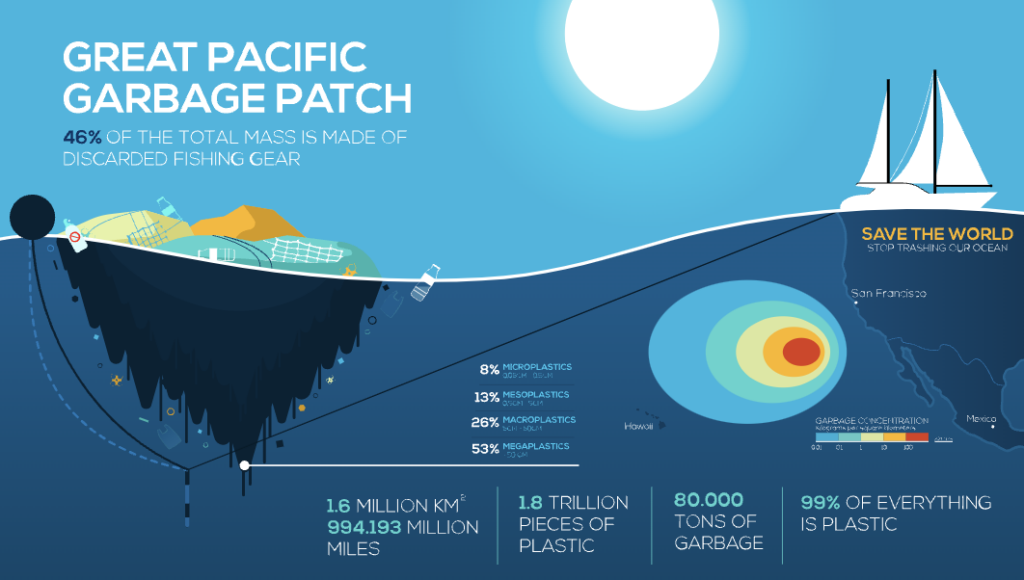climate wise
This section was designed to explain what a huge problem the generation of plastic waste is in a dental office and what VeraSIL is doing to address it… it starts with a understanding of just how much non-biodegradable waste is actually created in a dental office (on a daily basis) and what sort of an impact this is having on the environment and our patients. it behooves all of us in the dental industry to start becoming more environmentally conscious or “Climate Wise”. VeraSIL is proud to announce the concept of “Environmental Philanthropy” and we hope others will join us in this same effort to try and minimize the use of plastics in our profession and in our ecosystem.
An estimated 1.3-1.5 million plastic bottles are used around the world every minute and better than 90% of those bottles are NOT RECYCLED. That number is expected to jump another 25% by 2025 so, the use of Plastic has become an integral part of our modern-day lives but, despite the known health and environmental hazards, these plastic bottles pose, removing them entirely from the food chain has become an almost insurmountable task.
In early 2020 the European Parliament voted for an EU-wide ban on micro-plastics in cosmetics. The European Commission has also proposed a ban on single-use plastic products such as cotton buds and plastic straws and urged member countries to put the onus of cleaning up waste on producers in an effort to clean up oceans. By 2025, European nations are supposed to be collecting 90% of single-use plastic drink bottles. A similar type of ban is now being put into effect in Canada with the added ban on the use of plastic grocery bags.
Several other nations have banned plastic bags completely, and a growing number of cities, including many in the US, are discussing moves to ban straws and other single-use items.
Due to a growing industry-wide trend towards single-use-disposable products, Dentistry has become a major consumer and user of sterile and sanitary disposable sundry plastic items. Stop and think about the sheer daily volume of just the disposable nitrile exam gloves that are donned and doffed each and every day around the world – the volume is astronomical. As a profession, we generate an alarming amount of non-environmentally friendly, non-biodegradable plastic which ends up in our landfills.
The vast majority of these plastics are manufactured using a variety of highly chemo-toxic chemicals including stabilizers, solvents, flame retardants, preservatives and carcinogens – none of which, were ever intended to be ingested by humans or animals.
Some of the more common plastics include Polyvinyl chloride (“PVC”), Polypropylene and Polyethylene Terephthalate. PVC is widely known as the most toxic plastic for the environment. There are also major health concerns with the use of PVC because it is known to be an endocrine disruptor which affects human hormonal balance.
Many of these disposable plastics are also highly flammable, non-biodegradable and environmentally hazardous. Because these plastics cannot be safely incinerated (due to the risk of air pollution and the creation of dioxins and other potent carcinogens) they commonly end up in either our landfills or they leach directly or indirectly in our waterways where they break down slowly and release phthalates, bisphenols, fluorinated compounds, vinyl chlorides, ethylene dichloride, lead, cadmium and other toxic chemicals into our water.
From the landfills, these plastics make their way into the aquifers and into our streams, rivers and oceans where fish and invertebrates consume these microplastics and contaminate our food supply. The billions of tonnes of circulating plastic garbage in our oceans, rivers, lakes and streams are continually undergoing repetitive degradation via wave and tidal action. This is how an overwhelming amount of microplastics are generated. These chemical-laden microplastics are then absorbed and ingested by algae and plankton which are then consumed by fish. They work their way up the food chain until that seafood is ultimately consumed by humans – which is how the microplastics find their way into our bloodstreams. The presence of these chemical-laden microplastics in humans is irrefutable and has been analyzed and quantified using Fourier-transform infrared micro spectrometry. The data was so concerning that in 2019 the UK Government launched a study of the health impacts of ingested microplastics.
EACH YEAR, EIGHT MILLION TONNES
of plastic is being dumped into our Oceans!

Because these micro-plastics are microscopically small, they are typically colourless, tasteless and odourless. Because of the residual chemicals contained in these microplastics researchers have found that once these plastic particles are ingested and make their way to the gut they can aid the transmission of toxic chemicals and pathogens and do affect the digestive system’s immune response.
Steps are now being taken to try and stem the rising tide of plastic pollution, for instance, by banning the use of micro-beads in some jurisdictions. Increasing campaigns, by the UN and the WHO, are being waged because of the dangers Plastic poses to sea life. Many fish and other marine creatures also consume these plastics, sometimes confusing them for food.
YOU ARE WHAT YOU EAT
The Ingestion of Microplastics by ALL Life Forms is of Growing Concern
Scientists still know little about the effects of microplastics once they enter the human body, although many studies have already found them present in various sea-foods that people commonly eat. As far back as 2011, it was reported that “almost all plastic products” sampled released chemicals with estrogenic activity 3. Research in Environmental Health Perspectives finds that BPA leached from the lining of tin cans, dental sealants and polycarbonate bottles can increase the body weight of lab animals’ offspring. A more recent animal study suggests that even low-level exposure to BPA results in insulin resistance, which can lead to inflammation and heart disease and cancer. 1
Fortunately, steps are now being taken to stem the rising tide of plastic pollution, for instance, by the banning of micro-beads in some jurisdictions. Increasing campaigns, by the UN and others, are being waged because of the dangers plastics pose to sea life. Many fish and other marine creatures consume these plastics, sometimes confusing them for food 2.
Based on a growing volume of scientifically based data, our Clinical Research Team concurs that the ingestion of Micro-plastics may have potentially serious Immuno-inflammatory consequences for humans because 90% of Polycarbonate plastics (such as Polypropylene, Polyethylene Terephthalate, Polystyrene and PolyVinyl Chloride) are manufactured using solvents, plasticizers, colourants and Bisphenol A (“BPA”). BPA is a known estrogen-like endocrine disruptor that has been shown to leach into food such as fish and other meats. These Polycarbonates are often made of carbon and hydrogen, oxygen and nitrogen as well as smaller levels of sulphur, chlorine, fluorine, phosphorous, and or silicon. The toxic biological effects of these constituent elements have long been known to lead to enhanced inflammatory responses, size-related toxicity of plastic, toxicological, immunological, or developmental disturbances in humans, animals and marine life. Such disorders have now been classified as Immune-Mediated Inflammatory Diseases (“IMID”).3,4
Because the immune system has already been sensitized by these micro-plastics, we believe this may explain an ever-increasing number of patient sensitivity reactions to dental materials such as acrylates, monomers and anesthetics.
Of equal concern is that other chemical materials such as Butylated- Hydroxy-Toluene (“BHT”) and 1,2, Methacraloyloxy Dodecyl Pyrinidium Bromide (“MDPB”) are now being intentionally impregnated into the resin polymer matrices of many of the bonding primers, adhesives and resin composite materials which Dentists are using to restore teeth. Dentists are being told that these ‘Bioactive’ resin polymers are better and safer but, anyone with an ounce of common sense has to realize that the use of a Quaternary Ammonium Chloride derivative (like MDPB) as a disinfectant on open, etched dentine tubules is probably not safe even when bound to a porous mineral called Silica (Silicon dioxide) no matter safe the manufacturer says it is… Think no further than what the Breast Implant industry once claimed about how safe and effective Silicone breast Implants were until they were banned from the market by the USFDA over health risks from the leaching of silicone into the body including cancer, connective tissue diseases, and autoimmune disorders.
Because of the large number of sterile and sanitary disposable sundry items which are typically used in the Dental office, we as a profession generate an alarming amount of non-environmentally friendly plastic (including the two most common: Polypropylene and Polyethylene Terephthalate) which makes it way into landfills and which is not bio-degradable.
SIMPLY PUT
As a profession, we have to do more to minimize the impact on our land and our Oceans!
In 2018, VeraSIL’s focus shifted towards the development of hundreds of specific Clinical Protocols for a NanoMetallic Silver Oxide Technology called “CURASIL®” which could be used to improve a wide range of clinical outcomes for dental patients and to help eliminate the use of chemo-toxic ingredients – many of which are commonly used in adhesive dentistry and impregnated into plastics.
From our R&D efforts, there is a growing collection of evidence-based medicine demonstrating the efficacy and performance of this NanoMetallic Silver technology without the need for chemo-toxic ingredients (including Antimicrobial agents like CHG, BHT and MDPB) 5. We now have thousands of clinical-based observations from hundreds of Healthcare Professionals; Independent USP 51 21 CFR Part 58 Antimicrobial Tests against thousands of microorganisms showing that you can selectively kill these pathogens without the use of chemo-toxic antimicrobial agents impregnated into microplastics. There is also a voluminous amount of scientific data to support this position including: 100+ public/third-party studies and tests; Hundreds of Oral DNA Polymerase Chain Reaction (“PCR”) Salivary tests; Numerous whites papers; Numerous Peer reviewed and published papers, Multiple FDA cleared, IRB approved, randomized human clinical trials on the safety, efficacy and human ingestion of NanoSilver; PubMed research papers as well as the largest Peer reviewed Meta-Analysis on NanoSilver in Dentistry ever published, in an April 2017 issue of Dental Material’s magazine by Nohrona et al.
1 The Estrogenic Effect of Bisphenol A Disrupts Pancreatic β-Cell Function In Vivo and Induces Insulin Resistance” Alonso-Magdalena et al, (January 2006). Environmental Health
2 “Plastic Water Bottles” McRandle, P.W. (March–April 2004). National Geographic. Retrieved 2007-11-13.
3 Excerpts taken from https://www.theguardian.com/world/2018/apr/25/nairobi-clean-up-highs-lows-kenyas-plastic-bag-ban
4 Andrew Zajac FDA issues BPA guidelines, Los Angeles Times, January 16, 2010
5 CHG = ChlorHexidine DiGluconate. In Canada, CHG is a Schedule 1 controlled substance which requires a patient to review and sign a detailed Informed consent before it can be administered.
BHT = Butylated Hydroxy Toluene – a toxic chemical substance (Endocrine Disruptor) banned in Europe, Canada, Japan, Australia and New Zealand
MDPB = 1,2, Methacryloyloxy Dodecyl Pyrinidium Bromide – A derivative of a Quaternary Ammoniated Chloride Disinfectant.
“This policy should definitely encourage other countries around the world, and not just in Africa, to ban plastic bags and other single-use plastics” – DR ARNOLD KREILHUBER, Head Of International Environmental Law At UN Environment
Unfortunately, only a very small number of dental manufacturers are currently producing dental products and packaging materials that are; 1) less chemo-toxic inside the body b) more biodegradable and c) more readily compostable.
Our VeraSIL TEAM is proud to say that we are making a concerted effort to develop products which meet all three of the above criteria.
VeraSIL is currently working on 6 separate products which utilize biodegradable and compostable plastics that can be broken down in landfills within 3-4 months – to produce a much-reduced carbon footprint…..
- OraSIL Cotton Rolls – Biodegradable and Compostable.
- OraSIL Non Woven Gauze Sponges – Biodegradable and Compostable.
- VeraSIL Barrier Wrap – Biodegradable and Compostable.
- OraSIL Silver Lozenges Plastic Bags – Biodegradable and Compostable.
- OraSIL and CuraSIL Bottles & Tubes – that are Biodegradable and Compostable.
- OraSIL Outer Packing materials -that are Biodegradable and Compostable and in which the above products can be packaged, stored and eventually disposed.
If VeraSIL can produce a series of products with a similar price and performance to competitive products but, which are also compostable, good for the environment and better for dental patients – WHY WOULDN’T YOU WANT TO BUY IT?
Our goal at VeraSIL is to eventually replace all our plastic products and packaging with environmentally friendly compostable alternatives. We aim to be one of the leaders in environmentally sustainable, compostable dental products.
ENVIRONMENTAL PHILANTHROPY
We want our customers to know, that when you purchase any dental product from our VeraSIL website, we take a percentage of our gross profit and use it to;
- Fund non-for-profit organizations committed to cleaning up plastic/garbage from our Oceans and Coastlines and
- Fund R&D into bio-degradable and compostable plastic alternatives.
We refer to this as “Environmental Philanthropy”




